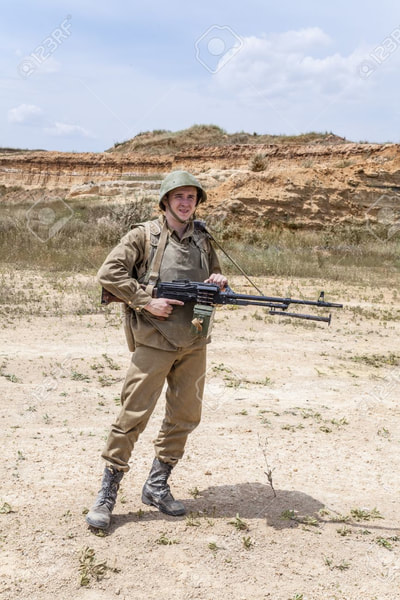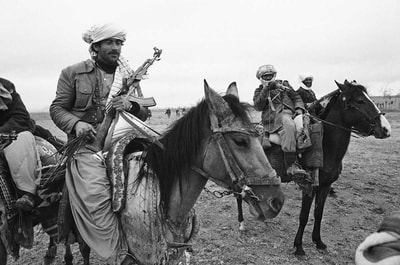Overview:
HL Unit 15: “Cold War conflicts in Asia” includes a study of Afghanistan. The emphasis is on the cause, nature, significance of foreign involvement, and impacts (up to 10 years after).
Go to the Cold War crises section of the SL course. Do the lesson there on Afghanistan before starting on this work.
“In December 1979 the period of détente ended when the Soviet Union invaded Afghanistan to maintain a failing socialist regime. The invasion was justified by the Brezhnev Doctrine, but there were also geopolitical reasons for the invasion. In late 1979 the Soviet Union perceived US foreign policy as weak and ineffective and expected little more than protest from the West. To its surprise, the consequences of the invasion were far-reaching and marked the beginning of what is [often] termed the Second Cold War” (Mamaux 163).
Guiding questions:
Why did the Soviet Union invade Afghanistan in December 1979?
How did the Soviet military intervention lead to war?
What was the impact of the Soviet intervention in Afghanistan?
What was the nature of the Soviet-Afghan conflict?
What was the impact of foreign involvement in the conflict?
How and why did the Soviet Union withdraw its forces from Afghanistan in 1989?
What are the similarities and differences in the nature of the conflicts in Vietnam and Afghanistan?
Why did a civil war develop in Afghanistan after the Soviet withdrawal and what was its outcome?
Read these questions above now to focus your learning, and come back to them later to answer them.
An overview chapter to help with revision
| afghanistan_book_scan_cold_war_conflicts.pdf | |
| File Size: | 5684 kb |
| File Type: | |
1. Causes and nature of the Soviet-Afghan war
You are going to watch a video, make a timeline, annotate it on display paper and then personalize your own copy of the timeline.
a)Before watching the following video, divide class into pairs. Each pair takes notes on just 1 of the following points:
-significance of Afghanistan
-Personalities
-Different parties and politics
-international involvement
-timeline (this needs 2 pairs for dividing note-making into 1st and then second 5 minutes of clip)
b) Watch “It’s history- Jihad with US arms the Soviet Afghan war.” It is a 9 minute clip. The other video here is just for reference: it is the same one as in the SL section. You have watched it already.
c) After making the notes each pair leads the discussion to allow the understanding of situation as a class (you could share all your notes on a google doc)
It's History: Jihad with US arms the Soviet Afghan war |
CNN Cold War Series, the cause and course of the war. Episode 20/24 |
|
|
|
d) Now, to expand your understanding, make a display paper chart in groups of 3 or 4 with the timeline as the focus.
Use the following BBC and PBS timelines to check the accuracy of your timeline before you start.
Use the following BBC and PBS timelines to check the accuracy of your timeline before you start.
|
| ||||||||||||
e) Attach annotated labels to the timeline to show main Afghan personalities, foreign personalities, Cold War Superpower attitudes, and internal Afghan issues and events.
To do this use the articles provided. They offer concise, accessible information from Encyclopaedia Britannica.
To do this use the articles provided. They offer concise, accessible information from Encyclopaedia Britannica.
|
| ||||||||||||||||||
|
| ||||||||||||
|
| ||||||||||||||||||||||||
Each student finalizes their own annotated copy of a timeline. Annotation means, adding personal, analytical remarks about events and causes and effects.
EXTENSION:
Turn into a short skit (teacher decides on group size) with focus on causes, nature, effects of Afghan war, as a Cold War conflict
EXTENSION:
Turn into a short skit (teacher decides on group size) with focus on causes, nature, effects of Afghan war, as a Cold War conflict
Now do this next exercise to test your ATL Thinking skills:
In pairs read through the chart in Task 2 from the document below and discuss which of the factors may have been the most important in the Soviet decision to invade Afghanistan in December 1979. Discuss with your partner which reasons the USSR would have made public as the official rationale for intervention. There are lots of other good resources in this document. Return to them for extension activities.
In pairs read through the chart in Task 2 from the document below and discuss which of the factors may have been the most important in the Soviet decision to invade Afghanistan in December 1979. Discuss with your partner which reasons the USSR would have made public as the official rationale for intervention. There are lots of other good resources in this document. Return to them for extension activities.
| inthinking_resources_afghanistan.docx | |
| File Size: | 3538 kb |
| File Type: | docx |
|
2. Impacts of the war
We will use the film “Charlie Wilson’s War” as the basis for this activity a) Use the 3 questions below to guide your notemaking. Look at the 3 video clips below to answer the questions
Watch the ”Who is Charlie Wilson?” clip Watch the Refugee Camp clip from Charlie Wilson film Discuss answers to questions Now go to the other resources below and use them to build on the answers above. |
“Charlie Wilson’s War” Trailer |
"Who is Charlie Wilson?" clip |
Refugee Camp clip from Charlie Wilson film |
|
|
|
b) Go back to the inthinking resources document above and do sections 3 and 5 to improve your understanding of the impact of the war, particularly concerning the role and attitude of the USA.
Should the USA have funded the Mujahideen? The long term impact of Cold War intervention
Additional reading on the Afghanistan conflict
| book_scan_cold_war_conflicts.pdf | |
| File Size: | 5684 kb |
| File Type: | |


